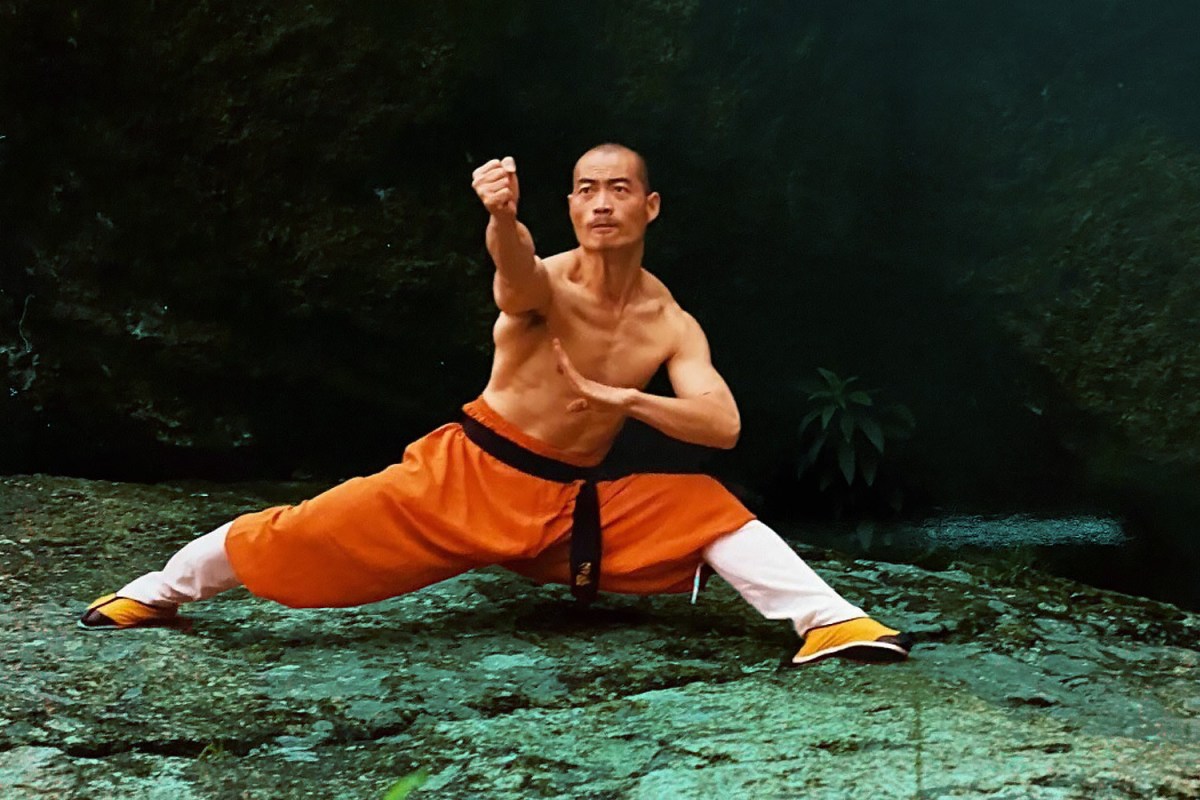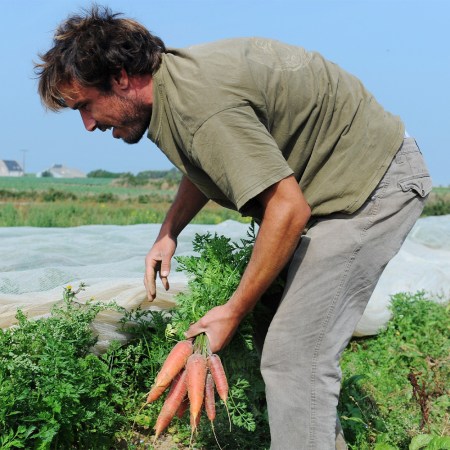Shi Yan Ming was just five years old when he arrived at the front entrance of the legendary Northern Shaolin Temple.
Due to an early sickness, Ming had almost died at the age of three, and his parents believed that the monks would be able to help the young boy find strength. Their faith in the monks was not misplaced. Living in the mountains of China since the late 400s, the Shaolin warrior monks were (and are still regarded) as superheroes in the East, capable of miraculous feats of mental and physical fortitude.
For years, Ming studied with the monks, spending every waking hour learning or living Ch’an Buddhism and Shaolin Kung Fu. The daily routine included handstands, combat training, weapons and meditation. By the time he was a teenager, he was able to sleep on one leg standing up and deflect the tip of a spear with his neck. In the 1980s, a young Jet Li visited the Shaolin Temple to film the titular movie, which brought an international eye to the community. The attention soon inspired the Shaolin Temple to dispatch a group of its warrior monks for an exhibition tour through the United States.
During that tour, Ming impressed everyone with his aerobatic movements and strikes. The young monk, now a master, discovered how his ability in the martial arts and pain tolerance could be a gateway for others into Shaolin philosophy. It became clear that Ming had found more than just the strength to survive in the Henan province, but a calling.
He brought Shaolin Kung Fu to the West, founding the USA Shaolin Temple in New York City, where he is now known as “shifu, the Chinese term for teacher. Here, Shifu Shi Yan Ming shares shares an insight into those extraordinary feats of fortitude that have become synonymous with Shaolin warrior monks — like the infamous iron palm — and the many lessons that they teach.
InsideHook: The level of pain a Shaolin warrior monk is able to endure is incredibly impressive. How is that tolerance built up?
Ming: Pain was a tool from our teachers from the beginning. The masters did not talk to us. They did not use words. If you didn’t do what you were supposed to do, you got hit or you were moved to do it in other ways. They were allowed to slap and hit you. That was the way that I was taught. That is what made me today. I appreciate it now. For those of us who came to the temple, you learn quickly that nobody is going to bless you and nobody is going to help you. You have to help yourself. Chinese Kung Fu requires you to sharpen your blade from early morning until late at night. This is every day. You learn that the martial arts are a way of life.
How were you first introduced to the practice of breaking bricks?
We started hitting things at an early age. I remember being at the temple, you would see one of the monks who knew the iron palm. You would see how they could break a brick with their bare hand, and of course we wanted to try it ourselves. So we would start hitting everything around us, from sandbags to trees to see what it felt like. Growing up, the Shaolin warrior monks were heroes to us, and we wanted to be just like them. So when we saw the monks at the temple breaking bricks, bending spears with their necks, and putting blocks on their backs, we wanted to do the same.
Did your masters ever explain to you a technique for breaking the bricks?
In order to break bricks you need hard qigong, which is the word we use to describe the skill to withstand these strong blows. But no, growing up, my masters never explained and we didn’t ask questions. Those answers were still given with action. For example, your master will never tell you exactly how to position your arm or fist above a brick, they would just hit your arm until it was in the right position. That was the same for every element of these physical feats.
The 10 Best Breathing Exercises for Sleep, Fitness and Calm
There are a lot of tricks out there. Keep these in your toolkit.How much of breaking the bricks and developing hard qigong is mental?
The physical practice is an exemplification of the mental work that you need to be doing, and vice versa. If your mind is weak, you will never be able to do these things. You won’t believe in your ability to do it. Doing that, you will put yourself in danger. To become a master of things in the physical world, you must first master yourself. The decision to train and practice every single day is also an act of the mind. These days, so many people are obsessed with taking a day off, or taking it easy. For the warrior monks, this is not an option or even a thought. How about a day off of eating food? How about a day off of drinking water? For us, this is the same idea.
Can you describe the feeling of those early strikes of the brick with your bare hard, and developing the iron palm?
Pain is a part of it, like pain is a part of life. You can’t be scared of pain. It takes many years to get to that point where you are able to break a brick. The first time that I chopped a brick, of course there was pain. The first time I hit a tree there was pain. That is for sure. But for many years we are hitting trees to build that tolerance in the hands and arms. Over many years of practice you do this. Eventually it becomes natural and common. You start by hitting the trees with every finger, developing the toughness in every inch of your fist.
How do these lessons apply to the weapons you practiced with?
The first weapon in Shaolin temple history was the bo staff. The world saw that when Jet Li put it in his movie that brought the Shaolin Temple to the world. I think it is important people know that the temple was destroyed many times over. In 1928 it was burned by warlords. It’s been attacked by the government many times. Despite that, the monks have always prayed for peace and love. The monks use the bo staff because they could knock you out, without killing you. They didn’t want to kill you. They wanted to teach you to do better things. They said that the broadsword did not belong to them, they wanted to carry weapons of peace. The most important weapon on the planet is peace.
Did you ever get knocked out?
Of course! I did get knocked out a few times. I remember thinking, damn that was strong and that was fast. It definitely hurts. The lights go out. But later on you wanted to try it out for yourself. I wanted to be the number one fighter. You don’t get knocked out when you are the number one fighter. If you are going to fight, you want to win. And when you knock someone out with the bo staff you are teaching a lesson, and you are pursuing peace.
How did it feel when you were able to break your first brick?
It felt fantastic because it felt like an accomplishment, but of course initially there is a sting. However, all pieces of wood are not made equal, and most hard qigong is performative, so don’t be fooled. There are ways to set up bricks to make them easier to break but it looks visually entertaining. I am very grateful that I was able to test my true power by using my bare knuckles to punch a steel car crash dummy. They discovered that the punches that we learn, the one-inch punch that Bruce Lee made famous, has the force of a car driving at 35 miles per hour.
Before striking a brick, or having a stick broken over your arm, what’s going on in your mind?
Over the years, we learned to keep nothing in our minds. Just do it. There is power in action without hesitation, in all facets of life and all pursuits. More empty, more power. Amituofo.
Shifu Ming is providing free classes throughout the month of May in honor of Asian American and Pacific Islander Heritage Month. For more information check their website. You can donate to their classes for the youth here.
Whether you’re looking to get into shape, or just get out of a funk, The Charge has got you covered. Sign up for our new wellness newsletter today.

























